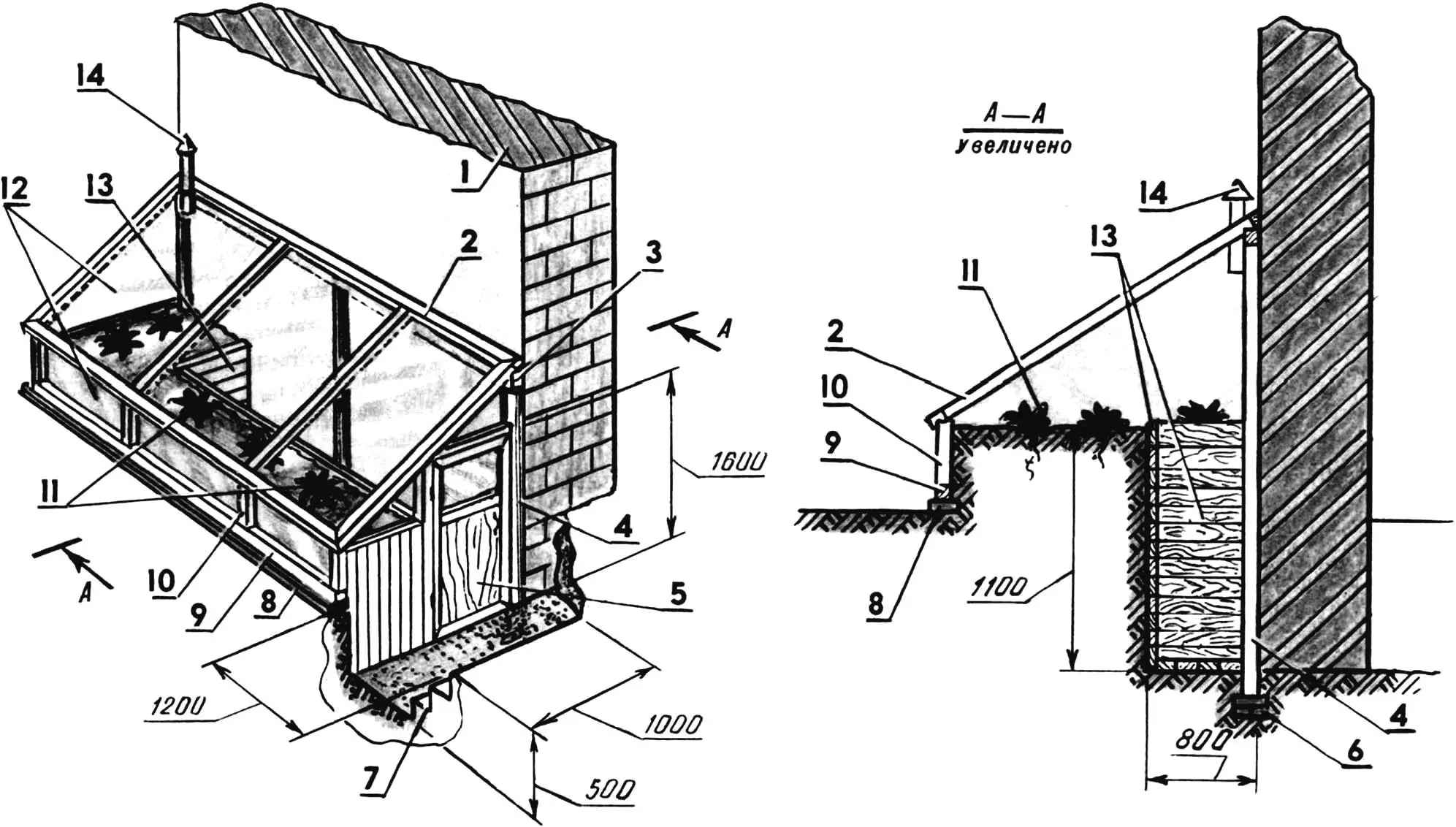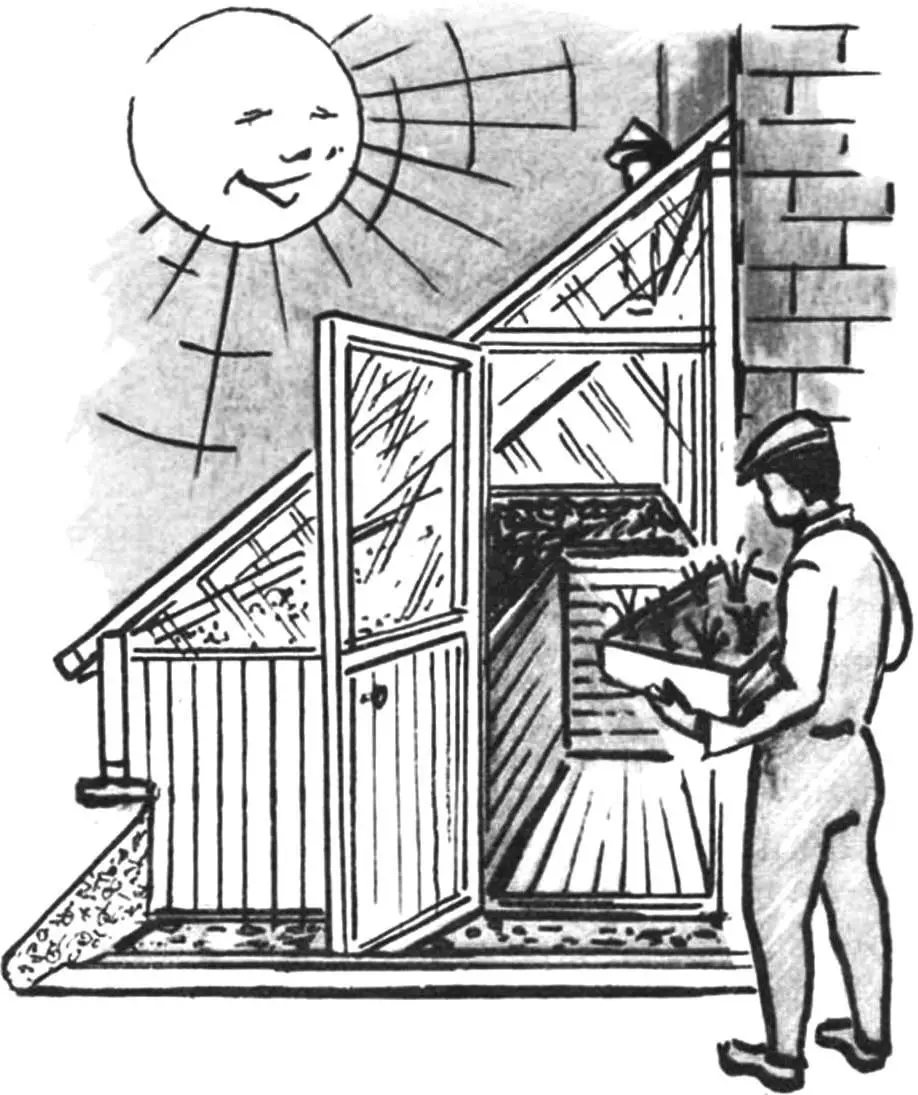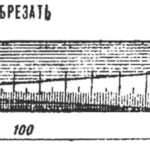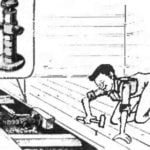Every gardener strives to heat their greenhouse as efficiently as possible. One of the most optimal methods is utilizing solar heat accumulated by the southern or eastern wall of a stone house. Building such a heliogreenhouse is quite simple.
First, a trench is dug along the wall of the house, 1.1 meters deep and 0.8 meters wide. It serves as a walkway to move among the plants. The remaining area of the greenhouse is used for gardening.
The trench is sheathed with clapboard or any other suitable material. In front of the entrance, a recess measuring 1×1 meter with a few steps is made. If the greenhouse will be heated, a vestibule is built above the recess. Holes are dug—or better yet, bored—for the posts, whose lower ends are pretreated with tar or lightly charred to prevent rot. These holes are 0.5 to 1 meter deep and 0.25 meters in diameter. A double-layer foundation made of four bricks laid with clay or cement mortar is placed at the bottom of each hole.

1 — house wall, 2 — greenhouse frame, 3 — top beam, 4 — post (3 pcs), 5 — door unit, 6 — double-row foundation, 7 — recess with steps, 8 — single-row foundation, 9 — bottom beam, 10 — upright (4 pcs), 11 — seedlings, 12 — plastic film cover, 13 — trench lining, 14 — exhaust pipe.
Strips and other structural elements are not shown conventionally
The gaps between the posts and the hole walls are filled with small gravel and poured with cement mortar (not shown in the illustration). Then they are covered with soil and compacted.
The top beam is laid on the posts, and the bottom one on the single-layer brick foundation with cement mortar. After installing four uprights, the frame is fitted in place.
A ready-made door unit is used, although a homemade one 1.6 meters tall is also acceptable.
The greenhouse is covered with plastic film starting from the bottom, securing it to the crossbars with wooden strips.
In northern regions, heating radiators are placed in such greenhouses, installed near the wall beside the trench. For ventilation, an exhaust pipe is mounted or a vent window is added.
The wall-attached greenhouse is used for growing seedlings from the first spring days, and even earlier if heating and daylight lamps are available. In winter, the heated greenhouse can successfully grow greens such as lettuce, parsley, onions, and dill. All that’s needed is to enrich the beds with manure and use a double layer of polymer film as cover.
P. YURYEV



